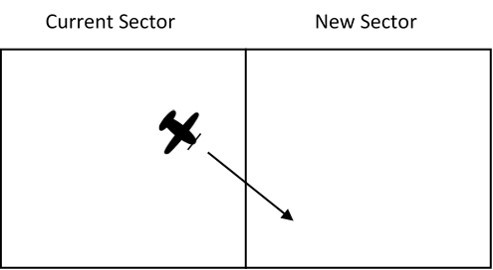
An ATC handoff occurs when a controller transfers an aircraft to next controller along the aircraft’s route. Here is a basic explanation provided by an active Air Traffic Controller and CFII:
Handoffs happen in 3 Steps…
- Transfer of radar identification
- When the aircraft nears the boundary of the next sector, we begin the radar handoff
- This usually occurs about 3 minutes from the boundary, though times vary widely by controller preference
- This referred to as “flashing” at the next sector
- Transfer of communications
- Once the receiving the controller accepts the handoff (step 1) communications are transferred
- “Contact XXX on XXX.XX”
- This is the part where airlines like to ignore controllers and make us repeat ourselves multiple times
- Transfer of control
- This occurs once the aircraft crosses the boundary between sectors
- At this point, the receiving controller is now in complete control of the flight
Important notes…
- After Step 1 begins, but prior to step 3, neither the receiving controller nor the transferring controller can change anything regarding the flight without verbally communicating with the other controller.
- This is usually when you’ll get a reply of “Standby”, since we need to perform coordination first
- If the flight is entering another sector in the same center, this can happen quickly, as we have instant communication lines between sectors
- If the flight is entering another facility, such as going from center to approach, or from one center to another, we have to call the other sector. Sometimes it takes a while for them to answer.
Author:
Chris Pezalla is an active flight instructor and publisher of the Advanced Guide To Holding Patterns. For a free preview of his book on Amazon Click Here.


Comments on this entry are closed.